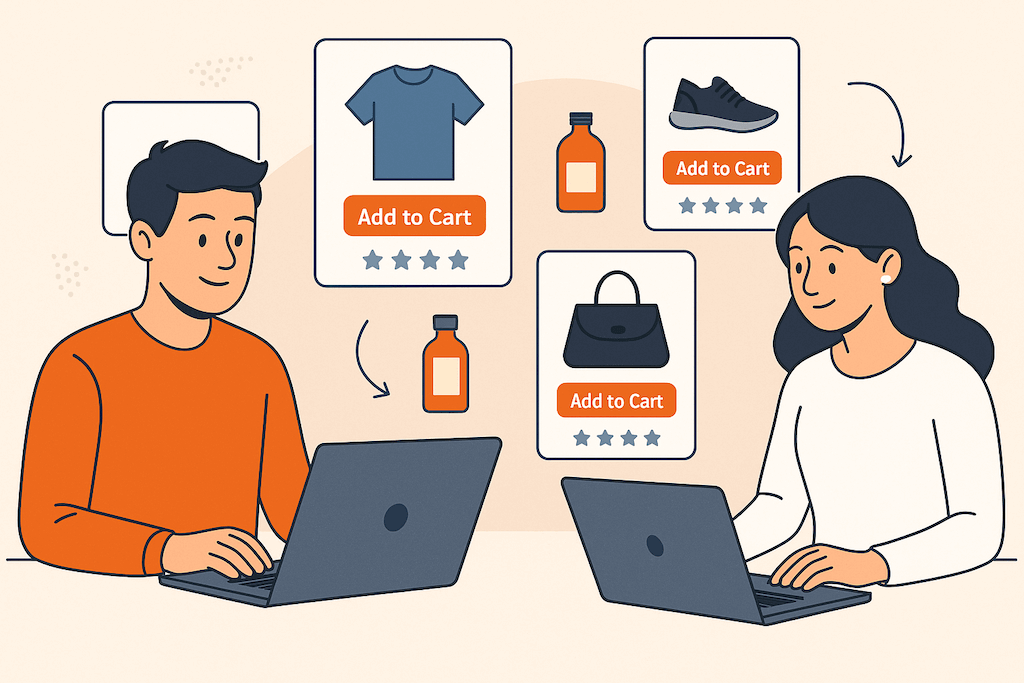Achieving success with eCommerce personalization is more than just including a range of products to meet the needs of your eCommerce customers. You not only have the opportunity to increase your sales, but you will also become their preferred alternative when making purchases. For this reason, many online business owners consider eCommerce personalization as one of the most effective methods to provide extended options based on the interests of the public.
This method can enable the following:
- Improve conversions by simplifying navigation and getting the clicks needed to make a sale.
- Increase the value of the shopping cart by setting an average amount of items to include at checkout.
Recommended Products
Recommending products delivers a greater impact to the audience and offers immediate benefits to eCommerce stores not only by improving conversions, but also by browsing behavior and decision making.
By using a behavioral analysis that allows you to determine customer preferences you can do the following:
- Show products related to what users are searching for to offer a variety, and also prevent potential customers from leaving the store if it does not meet their expectations.
- Include personalized recommendations for users who have already made purchases or visited the page in the past in which a selection of products tailored to their preferences will be displayed.
- Recommend products via email to registered visitors on the web, but have not yet made any purchases.
Another advantage of adding these types of recommendations is the increase in the average value of the shopping cart.
For instance:
- Show complementary products (cross-selling) for users who are not only interested in purchasing a single product, but also any complementing accessories.
- Show alternative products (up-selling) to encourage customers interested in purchasing more expensive, exclusive or premium items. Some examples may include the sale of luxury finishes for vehicles, or the hiring of a service for the purchase of a complementary product.
Attractive Content
Visitors are often attracted to the images of products, but it is also important to use a call to action that convinces them to make the decision to purchase them. This content should not only be placed on your website, but you can also send it in your email and social media marketing campaigns. According to the preferences of the users and the message you want to convey, it is recommended to utilize a friendly, empathetic and understandable approach with your content.
Creating an optimization strategy for your content is simpler than you think, especially if you use tools that allow you to analyze the material published by your competition. Just by reviewing some of your product descriptions, you will be able to get an accurate picture of the most appropriate terms to capture the public’s attention.
On the other hand, some other characteristics of the decision making process include:
- Creating a title that encourages customers to discover more
- Making the content meet the expectations that the title has created
- Including useful, relevant information that helps meet the needs of your audience
- Frequently updating content to deliver variety, or finding ways to repurpose preexisting quality content
Gamification
Gamification is the perfect way to encourage customer motivation and encourage them to take specific actions on the website such as making a purchase or leaving comments. This way, you can have a better knowledge about their needs and carry out quality strategies in order to interact more with them.
Some aspects that you need to consider before applying this technique are:
- Identifying your target audience
- Defining short, medium or long term goals
- Keeping your loyal customers through discounts or rewards
- Simplifying the buying process and making it memorable to influence their desire to repeat it.
As a method that urges users to meet a goal, whether through participation, interaction or competition, gamification is used in eCommerce businesses in the form of rewards and incentives. This allows the familiarization process with virtual companies to be much more effective, friendly and enjoyable for both new and returning customers. So what do we need to gamify in e-commerce?
Some basic principles include:
- Establishing a mission in order for your audience to reach a certain reward.
- Defining a benefit. The reward will get customers to convert, and can range from a free product to a discount coupon.
- Determining levels. Encourage the competitiveness of visitors and entice them to reach a higher rank within your business.
- Accumulating points. This will make your audience meet short-term goals.
Ready to bring your eCommerce project to life?
Implementing creative strategies across all platforms and devices is the main factor that will contribute to the growth of your business. Of course, not everyone knows the most appropriate way to create a perfectly personalized eCommerce website.
Cultura Interactive agency is an award winning Fort Lauderdale web design studio that strives to create unique and attractive websites, and develop strategic digital marketing campaigns for our clients.
Our team of professionals specialize in web design, logo design, WordPress development, eCommerce, responsive web design, mobile apps, SEO, social media marketing, pay per click advertising and more. Learn more about our services or contact us for a personal interview.



